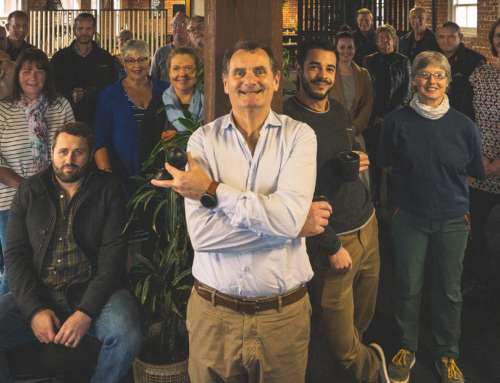
An elevator pitch allows us to send a consistent message that gives both us and our listener clarity about what we do and how they can help us or help themselves.
Our listener, by understanding our service, could use our service, help improve our service, support our service or inform others of our service.
By creating our pitch, we may better understand our service, improve our confidence explaining our service, or find areas to improve it.
What components does an Elevator Pitch have?
An elevator pitch is not significantly different to any other pitch – it seeks to inform, generate interest, and seek engagement. It will likely outline who we are, what we do, why we do it and deliver a call to action.
The first three components correlate with Aristotle’s three pillars of rhetoric, the art of persuasion;
1 Who we are – Ethos – our credibility or character.
What can we say about our organisation to establish trust or credibility? What brand, or image, do we wish to portray? Are we experienced, do we have qualifications, an authority in our field, key partnerships with reputable people, or do we have a solid reputation ourselves?
2 What we do – Logos – use of logic and reason.
Brainstorm the key aspects, facts and statistics that will stand out. What services do we provide, to whom, for how long, with what quality? How or where do we deliver them? What are the features of our service?
3 Why we do it – Pathos – appealing to people’s emotions.
How passionate are we about what we do? What is our motivation? Why did we start this or why do we do this? How do people benefit from what we deliver and how to they feel afterwards?
The above may be a personal story such as; I am…, I had … happen to me, now I…, because I want to… Our stories can accurately and effectively explain and inspire people to join with us. What drives us is likely to drive others. Sharing personal stories also generates trust.
4 Call to action. The most important component – your purpose for speaking.
Having heard our pitch, what can we ask our listener to do or think about that may have a beneficial outcome for them, our community or our organisation and the people we help? This could be a statement, a request or a question. Questions encourage a continuation of the conversation and deeper understanding. Often, knowing what you want to happen from your pitch helps define your call to action, your purpose, and helps generate what is important to share as who we are, what we do and why we do it.
A typical elevator pitch lasts 30 seconds or around 80 words.
Example:
Who – “My name is Becky. I’m a qualified fitness coach.”
What – “I motivate people to complete tailored programmes designed to achieve their fitness goals. I’m their conscience.”
Why – “I love watching my clients improve their physical and mental well-being, helping them live healthier, longer, more energetic lives.”
Call – “What are you doing for your fitness?”
What words to use
When we listen to people speaking, some words and messages resonate stronger than others. Use short, simple words that are easily understood and create a visceral and emotive response. Appeal to the five senses and convey the emotions we, and those impacted by our service, feel. The more vivid the language, the more memorable the pitch. Always be specific, avoid generalities and jargon.
How to use our Elevator Pitch
We can use it to introduce ourselves in formal or informal situations, to individuals or groups. Once memorised, our pitch allows us to speak confidently and eloquently, focused entirely on our listener and purpose, presenting our organisations and ourselves in a positive light, whilst staying calm and relaxed.
Distilling our pitch to one or two sentences enables it to be used as a mission statement, footer for documents, an email signature, answer machine message, or a phone introduction. As a leader, it can become our guiding principle, helping us stay focused and able to generate consistent decision making.
Distill the pitch even further, and you have a business card message or motto to help stay motivated, focused, and consistent.
Note: Some people find it easier to refer to their organisation in the “who are you” section. Some people prefer to leave out the “who are you” section altogether and focus on “what” and “why.” Decide what works best for you and your organisation.







Personally I don’t like the old “Elevator Pitch”, yes agree I think you should know how to explain to others what you do in a few words and being clear is important. I don’t like anyone trying to pitch themselves at me or people I know, that is why maybe why I am not good at playing sports I just keep missing the ball.